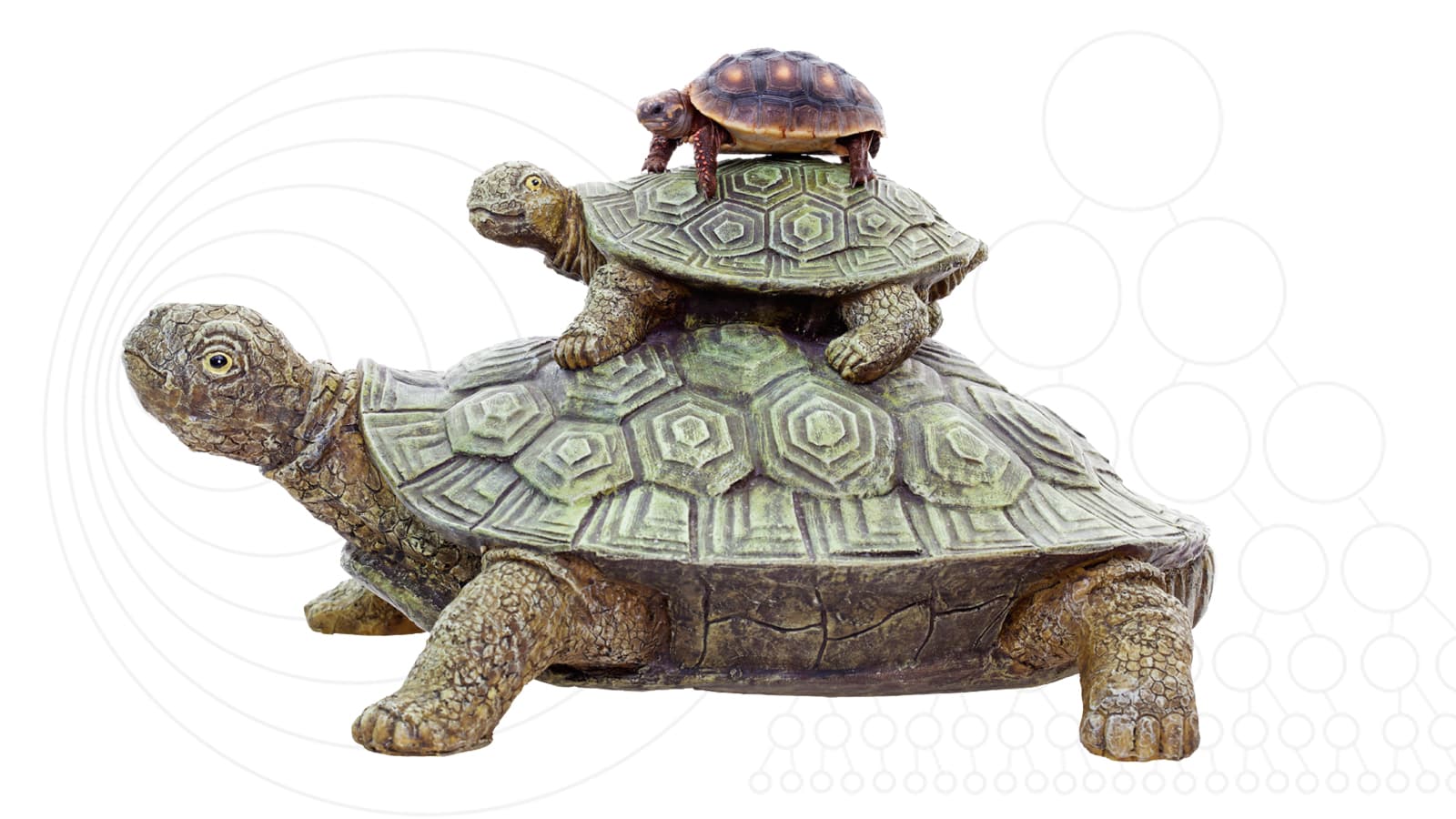“Holon” is a word coined by Arthur Koestler to describe wholes that are simultaneously parts of other greater wholes (a whole atom is also part of a whole molecule, which is part of a whole cell, etc.)
There is an old joke about a King who goes to a Wiseperson and asks how is it that the Earth doesn’t fall down?
The Wiseperson replies, ‘The Earth is resting on a lion.’
‘On what, then, is the lion resting?’
‘The lion is resting on an elephant.’
‘On what is the elephant resting?’
‘The elephant is resting on a turtle.’
‘On what is the…’
‘You can stop right there, your Majesty. It’s turtles all the way down.’
Turtles all the way down, turtles all the way up. This crucial insight into the nature of evolution reconciles much of the debate that has existed for centuries between atomists, who consider the fundamental parts of the universe as ultimately real, and the wholists, who see reality as a mere echo of the living whole of the universe. Neither argument is wrong, per se, though neither is quite right either. There is no fundamental part, no “bottom floor” which the entire universe can be reduced to in any meaningful way. Nor is there a single universal whole to which all of reality aspires—there are only whole/parts, or holons (a term coined by Arthur Koestler), spiraling infinitely in both directions. Whole atoms are part of whole molecules, which are part of whole cells, which are part of whole organisms, et cetera, ad infinitum. Even the totality of this present moment becomes a part of the following moment—turtles begetting turtles forever, stretching from the Big Bang to Eternity.
About Ken Wilber
Ken Wilber is a preeminent scholar of the Integral stage of human development. He is an internationally acknowledged leader, founder of Integral Institute, and co-founder of Integral Life. Ken is the originator of arguably the first truly comprehensive or integrative world philosophy, aptly named “Integral Theory”.

